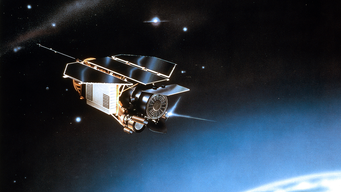Joachim Trümper receives Tycho Brahe Prize
In 2016, the European Astronomical Society honours former MPE director Prof. Joachim Trümper with the Tycho Brahe Prize in recognition of his visionary development of X-ray instrumentation, from balloon experiments and the discovery of cyclotron lines probing the magnetic field of neutron stars to his leadership and strong scientific involvement in the ROSAT mission.

In his PhD work (1957–59) at the universities of Hamburg and Kiel, Joachim Trümper developed the first triggered spark chamber and used such a device in 1960 to measure the spectrum of cosmic ray muons from the Zugspitze mountain. He continued to work on high-energy cosmic rays and initiated the Kiel extensive air shower experiment aiming at solving the problems of the chemical composition of cosmic rays in the “knee region”. After the discovery of pulsars in 1967, J. Trümper turned his attention to this new field. In 1969–70, on sabbatical leave from Kiel, he visited the Max-Planck-Institut für Extraterrestrische Physik (MPE) in Garching and decided there to start a programme of observational X-ray astronomy in Germany.
This materialised in 1971 when he became Director of the Astronomical Institute of the University of Tübingen (AIT) and started a competitive hard X-ray balloon programme. The stratospheric balloon observations continued even after his appointment in 1975 as Director of MPE, leading to unprecedented observations of the cataclysmic variable AM Herculis and the black hole binary Cygnus X-1. The most important discovery was, however, the detection of a cyclotron absorption line in Hercules X-1, the first direct measure of the extreme magnetisation of neutron stars. As a follow-up to the balloon programme, the MPE/AIT group turned to space projects with the development of the hard X-ray spectrometer HEXE operating from 1987 to 2001 aboard the Soviet/Russian Mir Station. HEXE discovered in particular delayed X-ray emission from the nearby supernova SN 1987A.

The preparatory work for the “Röntgensatellit” (ROSAT) was initiated by J. Trümper already in 1972 in collaboration with Carl Zeiss, with the goal to improve the mirror performance for large imaging X-ray telescopes. This led to two technological breakthroughs: the use of Zerodur for X-ray optics, and the reduction of the mirror roughness to only 2.5 Å. Based on these achievements, he proposed an early version of ROSAT already in 1975, as an element of the German space programme. A few years later USA and UK became involved, but Germany kept the leadership of the project and built at MPE the two main detectors of ROSAT.

MPE also built the powerful long X-ray test and calibration facility PANTER, which was not only used for ROSAT, but then also for all major European and US X-ray satellites, including EXOSAT, BeppoSAX, Chandra, XMM-Newton and Swift. ROSAT was launched in 1990 and operated until 1999 impacting strongly on many fields of astrophysics with about 4300 refereed publications and around 160ʼ000 citations.
The ROSAT all-sky survey yielded an unprecedented detailed view of the diffuse soft X-ray emission from the Galaxy including many supernova remnants, and ~125ʼ000 discrete sources. Besides being the principal investigator and the director of the observatory, J. Trümper was personally involved in a number of ROSAT highlights. These include in particular the famous X-ray picture of the moon, the unexpected discovery of X-rays from the comet Hyakutake, the discovery of the first millisecond pulsar in X-rays, and the ROSAT deep and ultra-deep surveys that showed that compact sources like quasars account for most of the extragalactic X-ray background.

The MPE, under the directorship of J. Trümper, also actively prepared the post-ROSAT era with several instrumental developments. These include the low-energy transmission gratings for Chandra and the complex mirror system for XMM-Newton. To develop X-ray CCDs for the PN-camera of this ESA cornerstone mission, J. Trümper founded a dedicated semiconductor laboratory, which continues developments for the detectors of the future eROSITA and ATHENA space missions. The very long and successful career of J. Trümper resulted in an impressive list of more than 700 publications among which almost 300 are refereed papers and totalising nearly 20ʼ000 citations so far.
The Tycho Brahe Prize is awarded in recognition of the development or exploitation of European instruments or major discoveries based largely on such instruments. The Tycho Brahe Prize is funded by the Klaus Tschira Stiftung, a German foundation, which was established by the physicist Klaus Tschira in 1995 as a non-profit organization. The Klaus Tschira Stiftung promotes the advancement of the natural sciences, mathematics, and computer science, and wants to raise appreciation for these fields.















